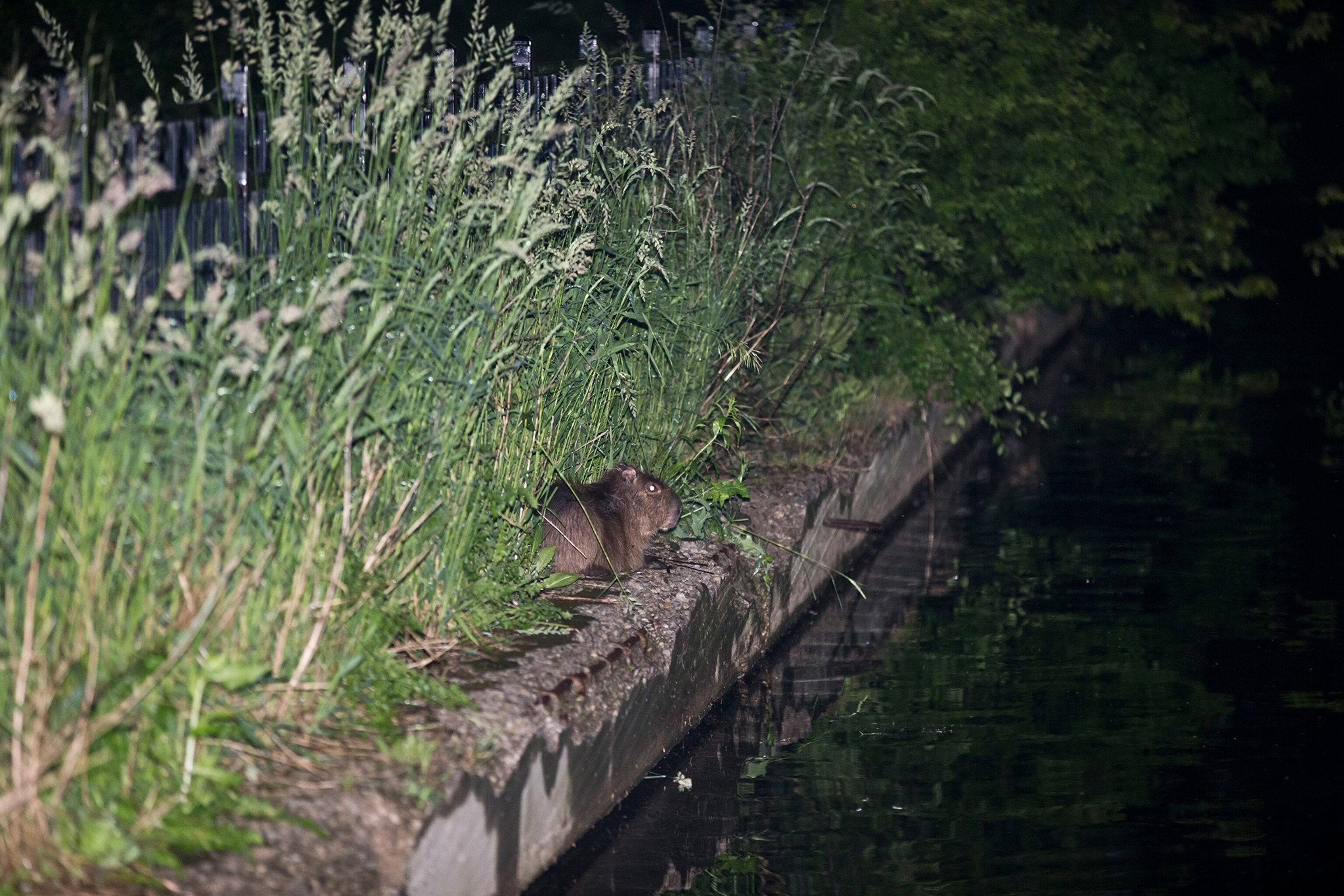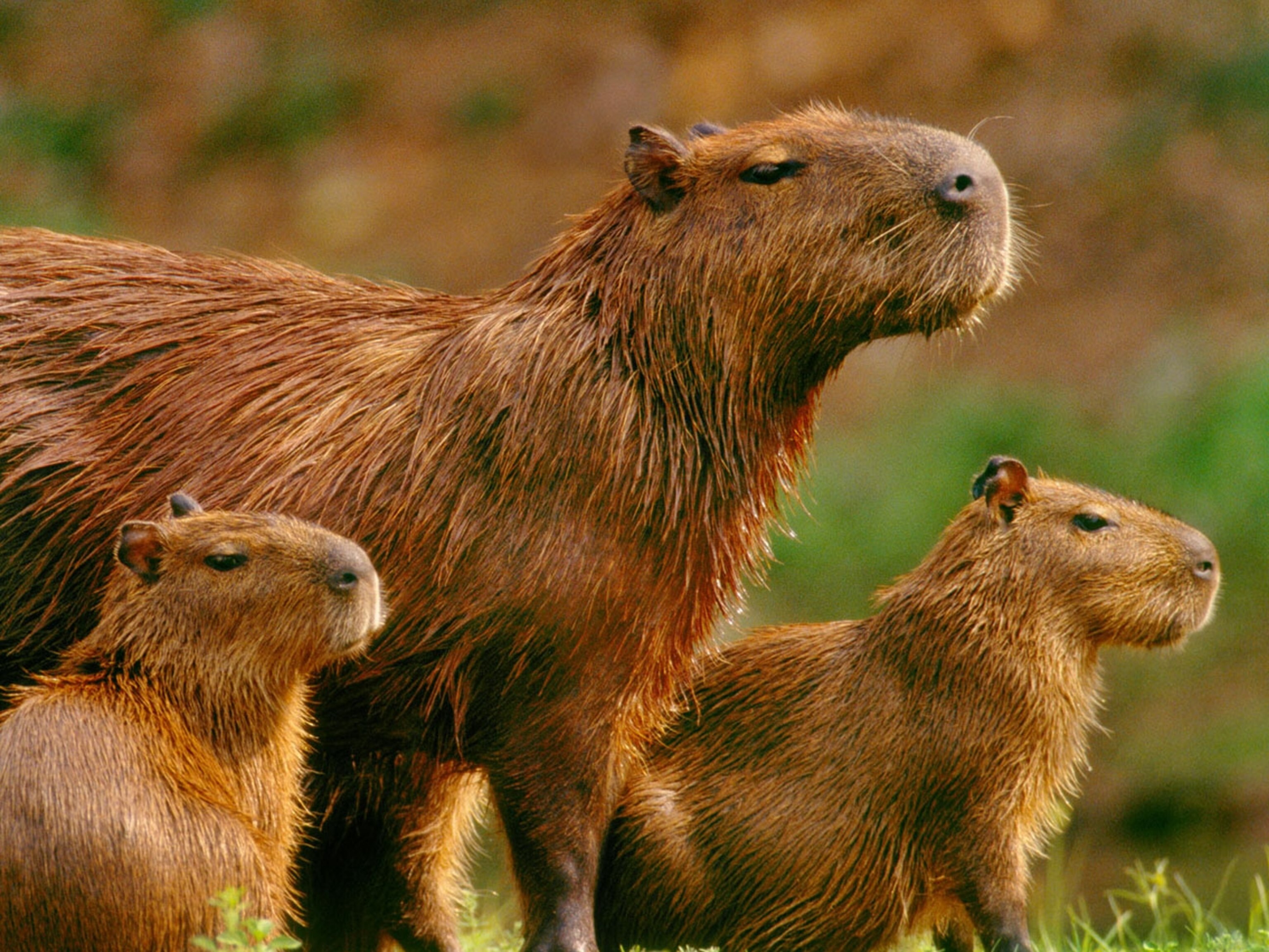
World's Largest Rodents On Lam From Toronto Zoo
After escaping from the High Park Zoo in Canada, two capybaras have eluded capture for over three weeks.
Most people do their best to avoid rodents of unusual size. But after a pair of capybaras escaped from Toronto’s High Park Zoo on May 24, the Canadian city’s residents have taken to the streets (and social media) in an attempt to help officials find the giant rodents and lure them back into captivity.
Easier said than done. It’s been more than three weeks since the pair, now nicknamed Bonnie and Clyde, made a break for it while being transferred to a new enclosure. And so far, attempts to recapture the rodents of interest have come up empty handed.
The capybara (Hydrochoerus hydrochaeris) is native to semi-tropical areas of South America, from Venezuela on down to Argentina. But the High Park capybaras have clearly found a way to make do in urban Toronto.
“Capybaras are pretty adaptive animals,” says Luciano Verdade, a wildlife ecologist at the University of Sao Paolo in Brazil.
Verdade says that they can eat other plants in absence of their native grasses, inhabit both wetlands and forest fragments, and switch between being active during the day and night.
“Last but not least, although they are relatively large animals, they can be deceptive in the proximity of humans,” says Verdade.
Largest Rodents On Earth
When it comes to the title of the world’s largest living rodent, all bow before the beefy wonder that is the capybara.
In the wild, Verdade says capybaras usually top out at 175 pounds (~80 kg), though in captivity some specimens have been known to push past 220 pounds (100 kg). They can grow over four feet long (~1.3 meters), but their build is short, squat, and barrel-like—usually growing no taller than a human thigh.
Like other rodents, capybaras have serious chompers that continuously grow as they’re ground down by gnawing. While these incisors make for formidable weapons against those who get too close, capybara are a favorite meal for caimans, jaguars, and anacondas.
In many of the countries where they are common, capybaras are also eaten by humans.
“The meat is sort of like a rabbit’s, halfway between white and dark,” says Rexford D. Lord, a retired ecologist and capybara expert. “It’s good. It’s really tender and tasty.”
Though the instances are rare, capybaras have been known to bite humans from time to time. But residents of Toronto probably need not worry—the rodents are far more likely to retreat than stand and bite.
“The capybara is semi-aquatic,” says Lord. “When it senses danger, it dashes toward the nearest deep water at a gallop. Then it slams into the water and disappears.”
The animals will even swim in different directions underwater so as to resurface far away from where a predator might expect. Once in the water, a capybara can keep its entire body submerged, exposing just its eyes and nostrils.
This is bad news for those who would see the escapees in Toronto returned to their pen, because the High Park Zoo is surrounded by several bodies of water.

Winter is Coming
The most immediate threat to the AWOL capybaras is probably trying to dodge vehicles while crossing a road. But if the animals somehow evade capture for the rest of the summer, another danger looms.
“They evolved for where they live, and they do well there,” says Lord. But the capybaras do not possess the necessary fat reserves or thick coats of animals that must endure harsh northern winters.
Some capybaras illegally released in the southern United States have shown resilience against light snow, says Verdade. But that’s nothing compared to the conditions the creatures would face in Canada.





